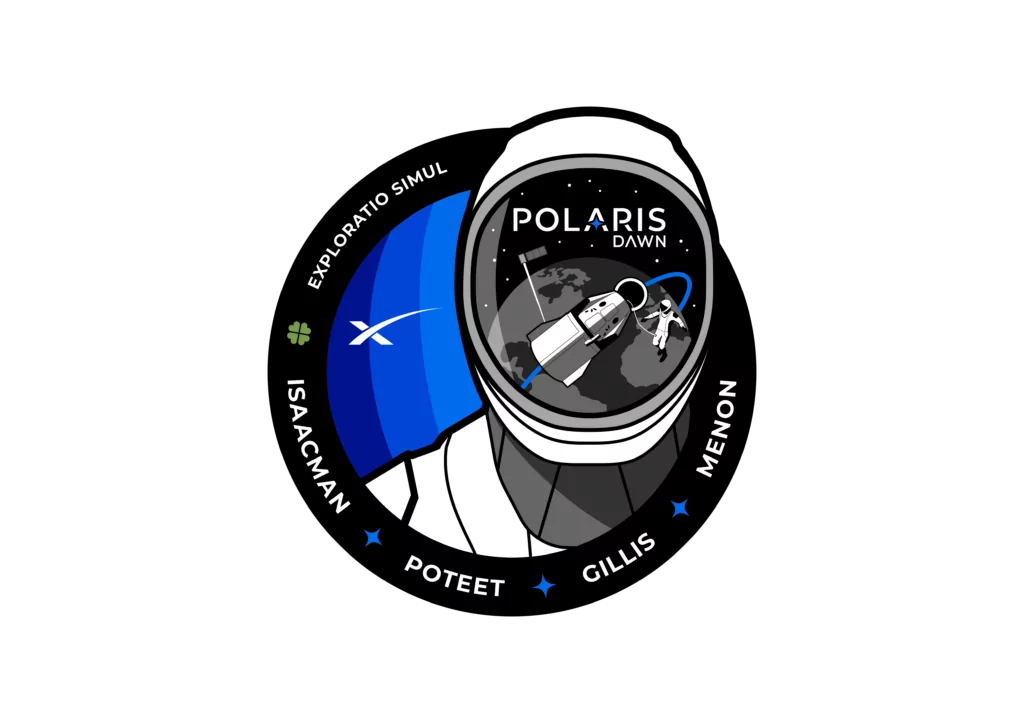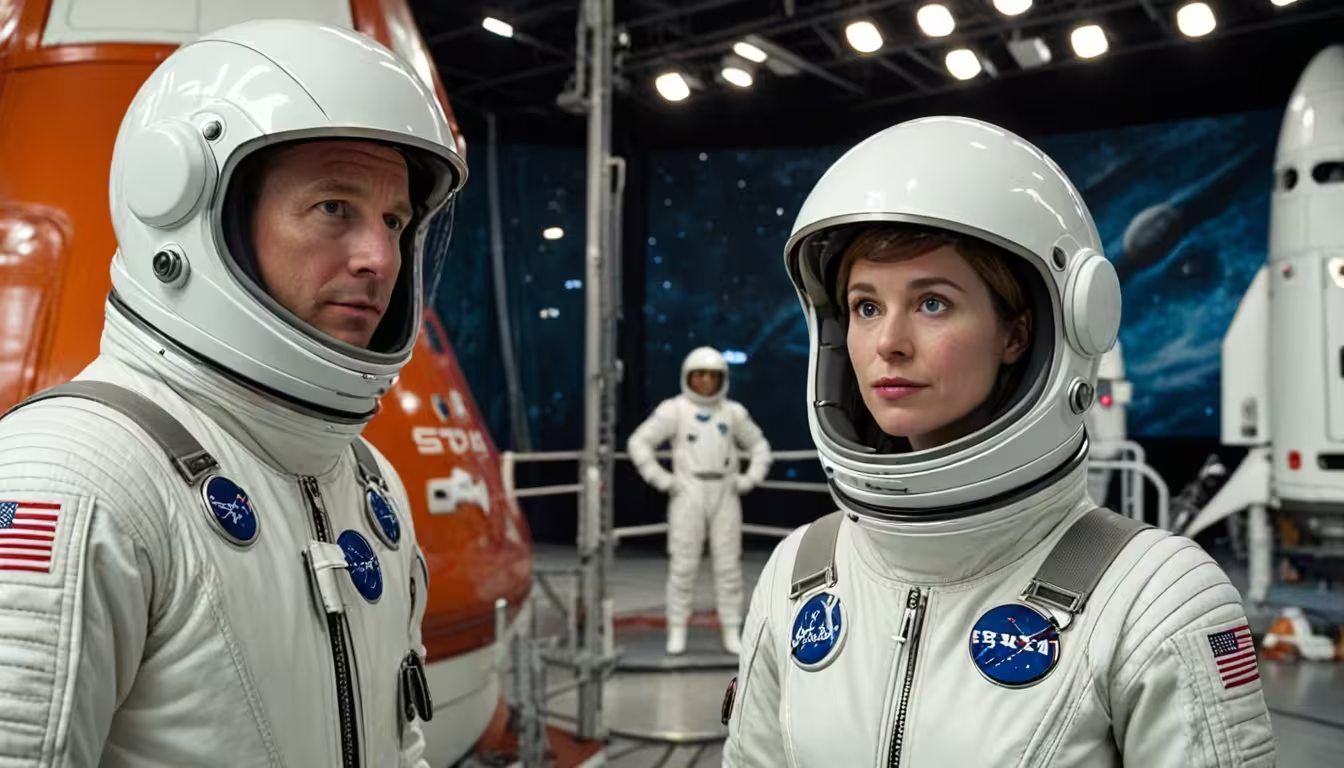In the vast expanse of human achievement, few moments capture our collective imagination quite like the first time a person steps out into the void of space. On Thursday, September 12, 2024, at 7:58 a.m. ET, we witnessed another such watershed moment as the crew of Polaris Dawn completed the first-ever commercial spacewalk – or extravehicular activity (EVA) – from a SpaceX Dragon spacecraft orbiting 732 km above Earth’s surface.
This groundbreaking mission, led by Commander Jared Isaacman, has pushed the boundaries of private space exploration and opened up new frontiers for human spaceflight. Let’s dive into the details of this historic event, explore its significance, and perhaps even chuckle at some of the internet’s reactions to this “spacewalk lite.”
The Polaris Dawn Mission: A New Chapter in Space Exploration
The Polaris Dawn mission represents a significant leap forward in commercial spaceflight. With a crew of four – Commander Jared Isaacman, Mission Pilot Scott “Kidd” Poteet, Mission Specialist Sarah Gillis, and Mission Specialist and Medical Officer Anna Menon – this flight aimed to reach the highest Earth orbit ever flown by humans since the Gemini program. But the true crown jewel of this mission was always going to be the attempt at the first commercial spacewalk.
Preparing for the Void: A Delicate Dance with Pressure
Space, as it turns out, really doesn’t want humans to visit. The process of preparing for a spacewalk is a testament to this fact. The Polaris Dawn crew began their preparations shortly after liftoff, embarking on a two-day pre-breathe process. This isn’t some new-age relaxation technique, but a crucial procedure designed to prevent decompression sickness – colloquially known as “the bends” to scuba divers.
This pre-breathe process involves slowly acclimatizing the crew to lower pressures while gradually increasing oxygen levels within the spacecraft’s cabin. It’s a delicate balancing act, ensuring that the astronauts’ bodies are ready for the extreme conditions they’ll face outside the relative safety of their Dragon capsule.
The Main Event: Stepping Out into Nothingness
With pre-breathing complete, the real work began. The crew donned their EVA suits – specially designed for this mission – and conducted rigorous leak checks. Then came the moment of truth: venting the Dragon capsule down to vacuum.
As the hatch opened, the Polaris Dawn crew made history in more ways than one. Not only was this the first commercial spacewalk, but it also marked the first time four astronauts have been exposed to the vacuum of space simultaneously. It’s a small detail, perhaps, but one that underscores the pioneering nature of this mission.
Over the next 20 minutes – a mere blink of an eye in cosmic terms, but an eternity when you’re floating in the void – Commander Jared Isaacman and Mission Specialist Sarah Gillis took turns exiting the vehicle. Their mission: to evaluate the suit’s mobility, test its thermal systems, and assess the effectiveness of the Dragon mobility aid ominously named “Skywalker.”
Inside the capsule, Mission Pilot Scott Poteet and Medical Officer Anna Menon kept a watchful eye on vital support systems. Their role, while less glamorous perhaps, was no less crucial to the success and safety of the mission.
A “Half-Hearted” Spacewalk? The Internet Reacts
Now, let’s address the Martian in the room. Social media, true to form, couldn’t resist poking a little fun at what some dubbed a “half-hearted” spacewalk. The mission patch shows an astronaut floating freely in space, connected to the Dragon capsule only by an umbilical cord. The reality, however, was a bit more… grounded.

Instead of free-floating, the two brave souls who ventured outside held onto a railing. Cue the memes and witty comments:
“SpaceX introduces the revolutionary concept of ‘space-leaning-out-the-door’!”
“Breaking news: Billionaire pays millions to cling to space railing for 20 minutes.”
“Dragon’s new feature: The Cosmic Porch™ – perfect for those who want to dip their toes in the void without fully committing.”
But let’s be real for a moment. While it’s easy to jest from the comfort of our earthbound sofas, what the Polaris Dawn crew accomplished is nothing short of extraordinary.
The Courage to Step Out
It takes an immense amount of courage to willingly place yourself in one of the most hostile environments known to humankind. Every spacewalk, whether it involves free-floating or holding onto a railing, carries inherent risks that most of us can scarcely comprehend.
The vacuum of space is unforgiving. Temperatures fluctuate wildly between scorching heat in sunlight and frigid cold in shadow. Micrometeorites whiz by at incredible speeds. And let’s not forget the ever-present risk of suit malfunction or depressurization.
So yes, while this spacewalk might seem “tame” compared to the free-floating EVAs of movies and our imagination, it represents a crucial first step in expanding human presence in space. It’s the difference between dipping your toe in the pool and diving headfirst into the deep end – you’ve got to start somewhere.
A Brief History of Spacewalks: From Leonov to Polaris Dawn
To truly appreciate the significance of the Polaris Dawn spacewalk, it’s worth taking a quick trip down memory lane.
The first human to ever perform a spacewalk was Soviet cosmonaut Alexei Leonov on March 18, 1965. Leonov spent about 12 minutes outside his Voskhod 2 spacecraft, tethered by a 5-meter cord. This pioneering EVA was fraught with danger – Leonov’s suit ballooned in the vacuum, making it nearly impossible for him to re-enter the airlock. He only managed to get back inside by dangerously depressurizing his suit.
Just a few months later, on June 3, 1965, American astronaut Ed White became the first American to perform a spacewalk during the Gemini 4 mission. White spent 23 minutes maneuvering with a hand-held oxygen jet gun, describing the experience as “the greatest sensation” he’d ever felt.
Since those early days, spacewalks have become more commonplace, especially in the context of the International Space Station (ISS). Astronauts routinely venture outside the ISS to perform maintenance, upgrades, and scientific experiments. These EVAs can last for hours and involve complex tasks requiring immense skill and concentration.
The Polaris Dawn spacewalk, while more limited in scope, represents a new chapter in this storied history. It’s the first time a private company has conducted a spacewalk, potentially paving the way for more commercial activities in Earth orbit and beyond.
The Road Ahead: Implications for the Future of Space Exploration
The success of the Polaris Dawn spacewalk has far-reaching implications for the future of space exploration. Here are a few potential outcomes:
- Increased Commercial Participation: This mission proves that private companies can safely conduct complex operations in space, potentially leading to more commercial spacewalks and other activities.
- Technological Advancements: The EVA suits and equipment developed for this mission will likely inform future designs, making spacewalks safer and more efficient.
- Expanded Access to Space: As commercial spaceflight becomes more common, we might see increased opportunities for scientific research, space tourism, and even manufacturing in orbit.
- Stepping Stone to Deep Space: The lessons learned from this mission could be crucial for future long-duration spaceflights to the Moon, Mars, and beyond.
- Inspiring the Next Generation: Missions like Polaris Dawn capture the public imagination and may inspire more young people to pursue careers in science, technology, engineering, and mathematics.
Conclusion: A Small Step for SpaceX, A Giant Leap for Commercial Spaceflight
In the grand tapestry of space exploration, the Polaris Dawn spacewalk might seem like a small thread. But it’s a thread that connects us to a future where human presence in space is not limited to government agencies and elite astronauts.
Yes, we can chuckle at the image of astronauts clinging to a railing as they peer out into the cosmos. But let’s not lose sight of the monumental achievement this represents. Every great journey begins with a single step – or in this case, a cautious lean out of a spacecraft door.
As we look to the stars and dream of a future where humans live and work in space, let’s celebrate these pioneering moments. The crew of Polaris Dawn – Jared Isaacman, Scott Poteet, Sarah Gillis, and Anna Menon – have etched their names in the annals of space history. Their courage, skill, and willingness to push boundaries will inspire generations to come.
So here’s to the dawn of a new era in space exploration. May it be filled with wonder, discovery, and yes, even a few more cosmic porch moments. After all, in space, no one can hear you say, “Hold my beer and watch this!”
- Polaris Dawn Official Homepage: https://polarisprogram.com/dawn/
- SpaceX Polaris Dawn Mission Page: https://www.spacex.com/launches/mission/?missionId=polarisdawn
- St. Jude Children’s Research Hospital – Polaris Dawn Mission Page:
https://www.stjude.org/inspire/news/polaris-dawn.html - Jared Isaacman’s Twitter (Mission Commander): https://twitter.com/rookisaacman

